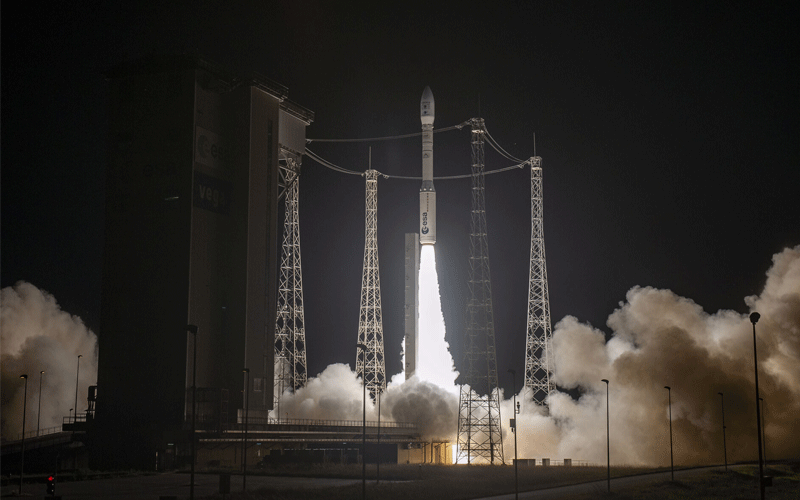
Arianespace launched a Vega rocket in the early hours of 9 October, carrying two primary payloads and ten small secondary payloads. The VV23 flight was Europe’s third and final mission of 2023.
The Avio-built Vega rocket was launched from the Guiana Space Centre in French Guiana at 01:36 UTC, carrying a total payload of approximately 1,241.7 kilograms.
Approximately 55 minutes into the flight, following two ignitions of the rocket’s AVUM upper stage, the mission’s THEOS-2 and FORMOSAT-7R/TRITON primary payloads were simultaneously deployed. Two more burns and 49 minutes later, all ten of the mission’s secondary payloads were deployed. The rocket’s upper stage then completed a fifth and final burn, putting the stage into a trajectory that would see it burn up as it reentered Earth’s atmosphere. This final burn ensured that no unnecessary space junk was created as a result of the launch.
The two primary payloads were deployed at an altitude of 601 kilometres. THEOS-2 (THailand Earth Observation System-2) is a 417-kilogram very-high-resolution Earth observation satellite manufactured by Airbus Defence and Space for the Kingdom of Thailand. The satellite will support the country’s “key development priorities.”
FORMOSAT-7R/TRITON is a 241-kilogram weather satellite equipped with the Global Navigation Satellite System-Reflectometry (GNSS-R) payload. The satellite was built by the Taiwan Space Agency, and data collected by the satellite will be used to help scientists study wind over oceans.
Secondary payloads:
- ANSER-Leader, ANSER-Follower 1, and ANSER-Follower 2 – These three satellites will work together to monitor the quality of water in Spanish swamps and reservoirs.
- PROBA V-CC – An ESA satellite that carries a scaled-down version of the vegetation-monitoring instrument that is aboard the agency’s larger PROBA-V satellite.
- CSC-1 and CSC-2 – A pair of satellites built by Netherlands-based ISISPACE. CSC-1 carries four different payloads, one of which is an experiment from KU Leuven University that will be studying the effects of radiation. CSC-2 is equipped with three payloads, one of which is also examining the effects of radiation, with this experiment being supplied by esc Aerospace.
- MACSAT – Built by Kongsberg NanoAvionics for OQ Technology, MACSAT is an in-orbit demonstration mission to demonstrate Internet of Things communication over 5G.
- ESTcube-2 – A satellite built by the Estonian Student Satellite Foundation that will test an innovative plasma brake that could be used for end-of-life satellite disposal.
- NESS – Commissioned by the French space agency CNES and built by U-Space, NESS will demonstrate technology that will monitor the civilian radiofrequency spectrum in the L and S bands. The data will be used to analyze sources of jamming.
- PRETTY (Passive REflecTomeTry and dosimetry) – an ESA satellite that will be used to measure ice and sea heights as well as ocean currents.
The Vega VV23 mission was the penultimate flight of the vehicle, with the final mission expected to take place in the first of 2024. Vega C had been expected to take over from the vehicle before its retirement. However, a failed launch in late 2022 and a failed ground test in June have kept the vehicle ground. The nozzle of the Vega C Zefiro 40 second stage is currently being redesigned with ESA and Avio targeting late 2024 for the vehicle’s return to flight.




